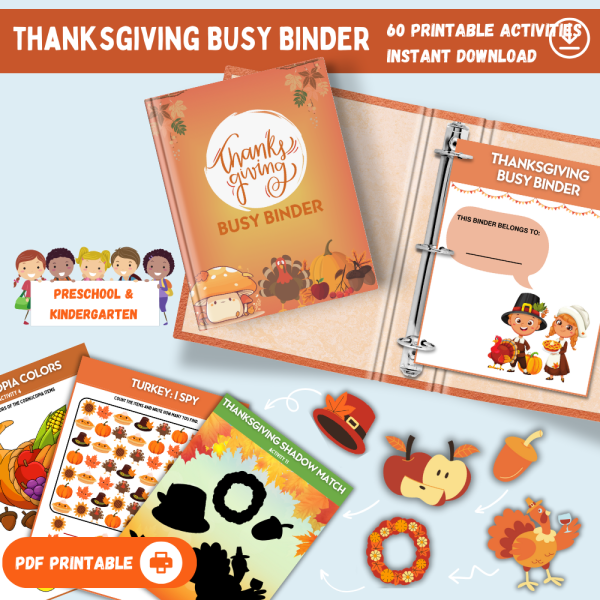Pumpkin Life Cycle Worksheet (Free Printable)
The perfect time to study the Pumpkin Life Cycle is in the Fall, which is a season of cool crisp air and weather changes. Many families are anticipating fun activities such as visiting a pumpkin patch. Children are preparing to return to school and many gardens are ending their harvest.
Everyone looks forward to sweater weather and pumpkin spice everything! Heading to the pumpkin patch is always an exciting time so why not use free printables to teach your kids about the pumpkin life cycle as they see the pumpkins in full harvest?

As the days grow shorter and the leaves start to change color, it can only mean one thing – pumpkin season is upon us! Pumpkin patches are opening all over the country, and people are getting ready to carve their favorite Jack-o-Lanterns.
But how much do you really know about pumpkins? In this blog post, we will take a closer look at the life cycle of a pumpkin, from planting the seed to enjoying a slice of pumpkin pie!

As an Amazon Associate, we earn from qualifying purchases. This site contains affiliate links.
Table of Contents
Supplies for the Pumpkin Life Cycle Worksheet:
- The Pumpkin Life Cycle PDF file (Get the free resource at the bottom of this post)
- Printer
- Printer Paper
- Scissors
Get the Thanksgiving Busy Binder Here
Pumpkin Life Cycle
What is the Life Cycle of a Pumpkin? This is a fun free Printable covering the Pumpkin Life Cycle that includes activities that your kids would enjoy and would also encourage learning. This printable includes parts of a pumpkin for labeling, pumpkin activities and games, and pumpkin pictures to color and label.
What is a Pumpkin Life Cycle?
Native to North America, pumpkins are a type of winter squash. The lifecycle of a pumpkin begins when you plant a seed in the ground and provide it with soil, water, and sunshine.
The seed will begin sprouting and begin to blossom. The seeds from a mature pumpkin can be saved and used to grow more pumpkins during the next growing season. It typically takes 90-100 days for the pumpkin to fully ripen and the best time to plant pumpkin seeds is from May to June.
Pumpkin Life Cycle Worksheet
We have created this informative pumpkin life cycle worksheet and printable to help you teach your kids about the pumpkin life cycle.
Do you know how a pumpkin grows? It starts as a small seed, and then over time, it becomes a big pumpkin! This process from seed to harvest is an amazing one, and we will discuss some fun facts about pumpkins along the way! So sit back, relax, and enjoy this journey through the life cycle of a pumpkin.

The first step in a pumpkin’s life cycle is planting the seed. This usually happens in late May or early June. After the seed is planted, it will take about two weeks for it to germinate and sprout. Once the seed has sprouted, the pumpkin plant will start to grow! The plant will continue to grow throughout the summer, and by fall it will be ready to harvest.
Pumpkins are typically harvested in October, just in time for Halloween! After they are picked, the pumpkins are brought to a farm where they are cleaned and sorted. From there, they are either sent to a grocery store or sold at a farmer’s market. And finally, they end up on your doorstep or at your local pumpkin patch!
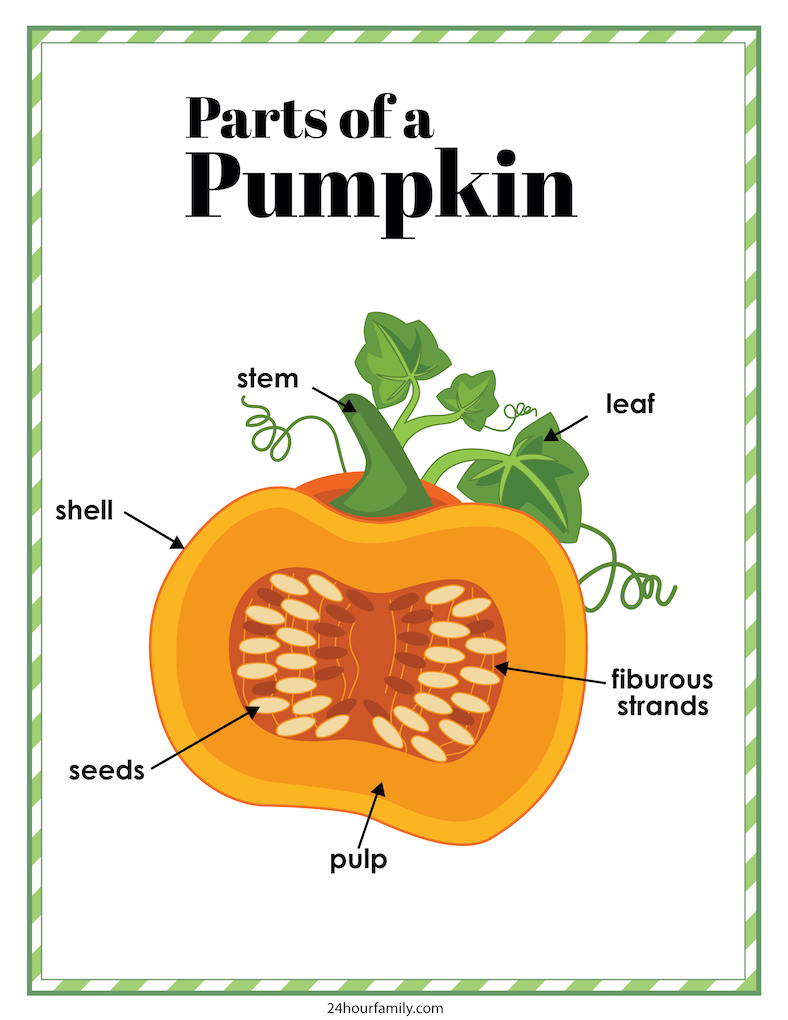
What are the Parts of a Pumpkin?
There are several parts to a pumpkin and they include the stem and leaf, the shell, seeds, pulp, and fibrous strands. Many parts of a pumpkin are edible. Most people think of the soft part of the rind being edible but the flower, leaves, and seeds are also edible.
Many of us are familiar with orange pumpkins, but there are other colors available such as yellow and white. The printable below covers the different parts of the pumpkin and includes areas for your child to color and label the different parts.
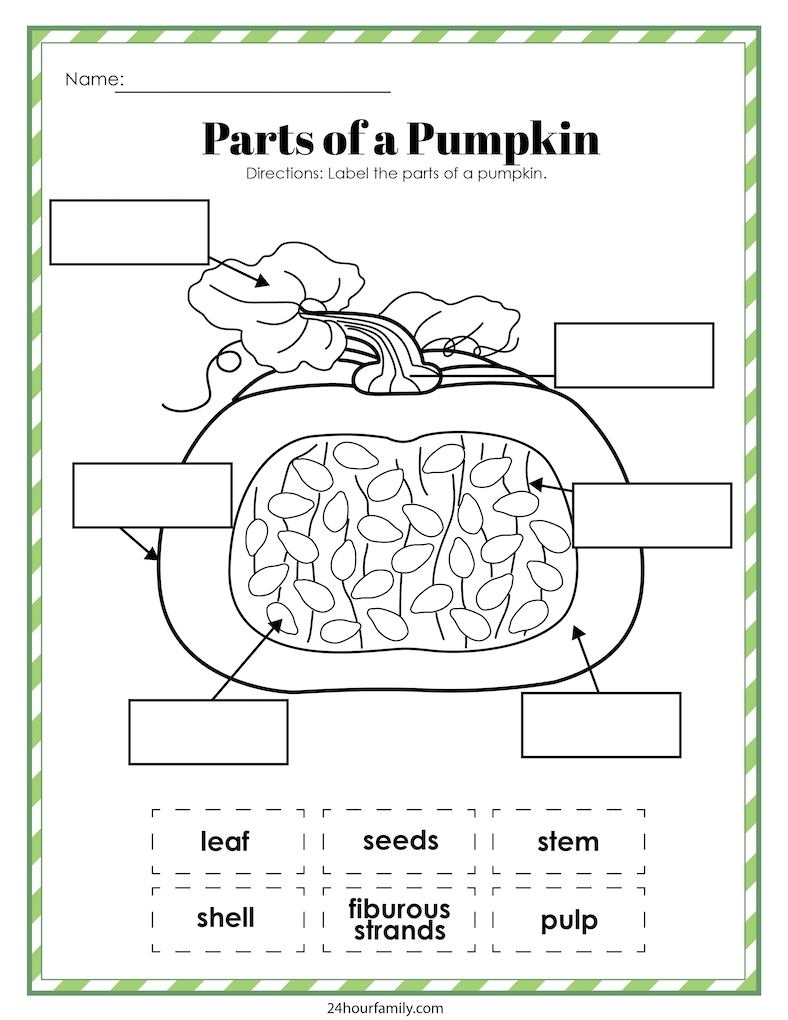
Is Pumpkin a Fruit or Vegetable?
Pumpkin is a fruit, but it’s also considered by many to be a vegetable.
It can be used in baking to make bread and muffins. It’s also great for making pie filling or soup base with its rich flavor that will give you an autumn taste without all the sugar added into your diet which makes it healthy too 😉

It has vitamins A and C as well as potassium which can help regulate blood pressure levels in people who have diabetes or are on medication for this purpose! So if you’re looking into eating healthier this fall season consider adding more pumpkin dishes to your diet
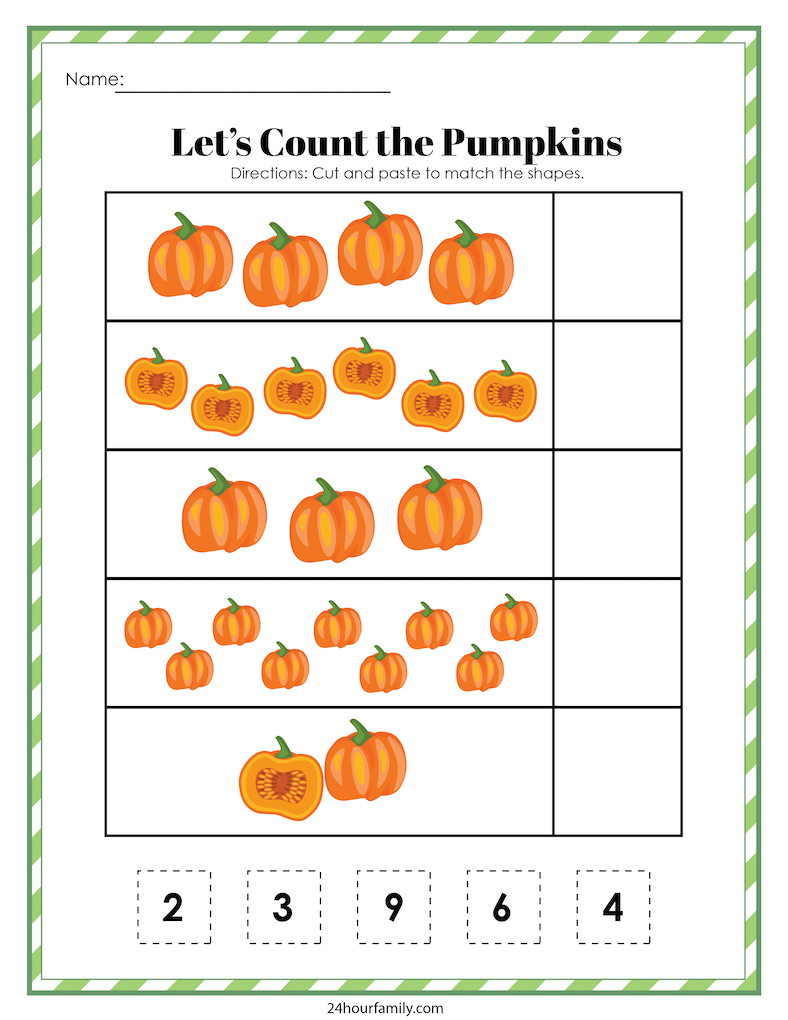
Pumpkin Life Cycle Craft and Free Pumpkin Printable
Pumpkin Growing Stages
If you are like most people, you love pumpkin-flavored everything this time of year. But have you ever thought about growing your pumpkins? It is a lot of fun and surprisingly easy! There are 7 stages of pumpkin growth, from planting the seeds to harvesting the pumpkins.
Stage One: Planting the Seeds
The first step in growing pumpkins is planting the seeds. You can do this indoors or outdoors, depending on your climate. If you live in an area with a short growing season, you will need to start your seeds indoors about six weeks before the last frost date.
Plant the seeds in small pots filled with moist potting soil. Place the pots in a warm, sunny spot and keep them evenly watered. The seeds should sprout within a week or two.
Stage Two: Transplanting seedlings
Once the seedlings have sprouted and grown several inches tall, they are ready to be transplanted outdoors. Choose a sunny spot in your yard with well-drained soil. Prepare the soil by adding some compost or organic matter. Be careful not to damage the roots of the seedlings. Water them well and keep them moist until they are established.
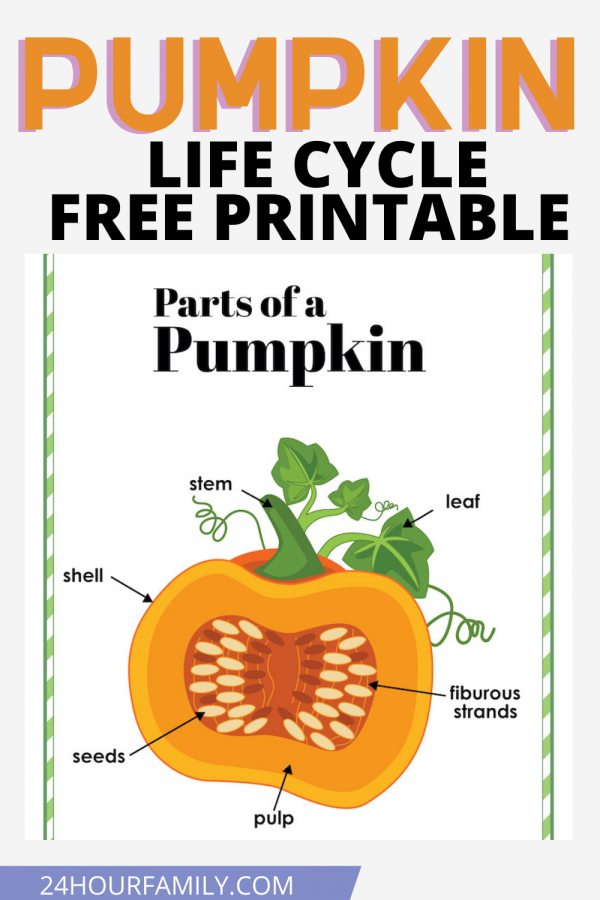
Stage Three: Vine growth
Once the seedlings are transplanted, they will begin to grow vines. Pumpkins are typically a vining plant, so you will need to provide them with some support. You can do this by placing stakes in the ground around the perimeter of your pumpkin patch. The vines will then wrap around the stakes as they grow. You can also build a simple trellis for your pumpkins to climb.
Stage Four: Flowering
After the vines have grown and are starting to wrap around the stakes or trellis, the pumpkin flowers will begin to bloom. Each flower is actually a cluster of male and female flowers. The female flowers will have a small pumpkin at the base of the flower, while the male flowers will not. The bees will pollinate the flowers, which is necessary for fruit production.
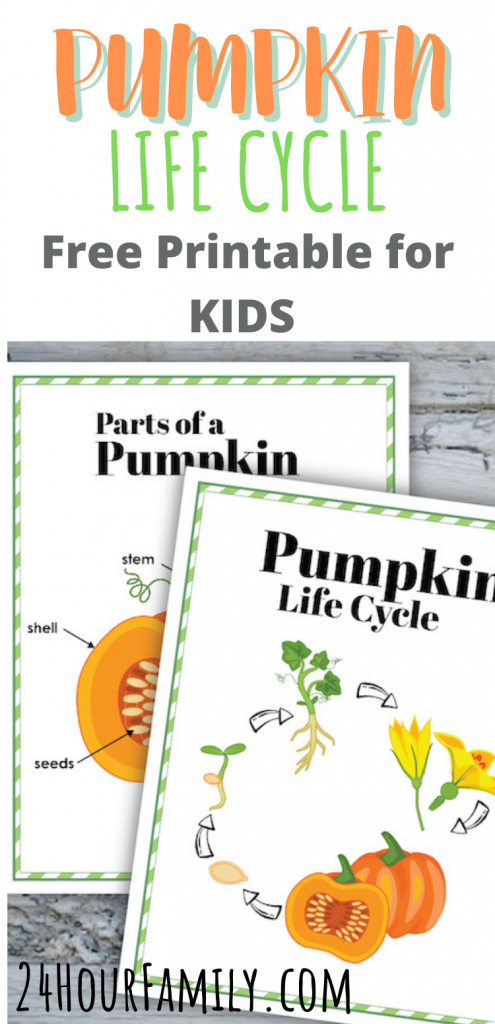
Stage Five: Fruit set
Once the flowers have been pollinated, the pumpkins will start to form. At this stage, you will need to thin out your plants so that each pumpkin has enough room to grow. Otherwise, you will end up with smaller pumpkins. You can thin out your plants by snipping off excess vines and leaves with pruning shears.
Stage Six: Pumpkin growth
After the pumpkins have started to form, they will begin to grow quickly. During this stage, you will need to keep an eye on the weather forecast and be prepared to protect your pumpkins if a frost is expected. Frost can damage the pumpkins, so you will need to cover them with a tarp or blanket if necessary.
Stage Seven: Harvesting
Once the pumpkins are fully grown, it is time to harvest them! You can tell when they are ready by checking the color of the skin. The skin should be deep orange and hard. Use a sharp knife or pruning shears to cut the pumpkin from the vine, being careful not to damage the skin. Pumpkins can be stored in a cool, dry place for several months.
We hope you have enjoyed learning about the pumpkin growing process and also enjoy the free Pumpkin Life Cycle Printable!
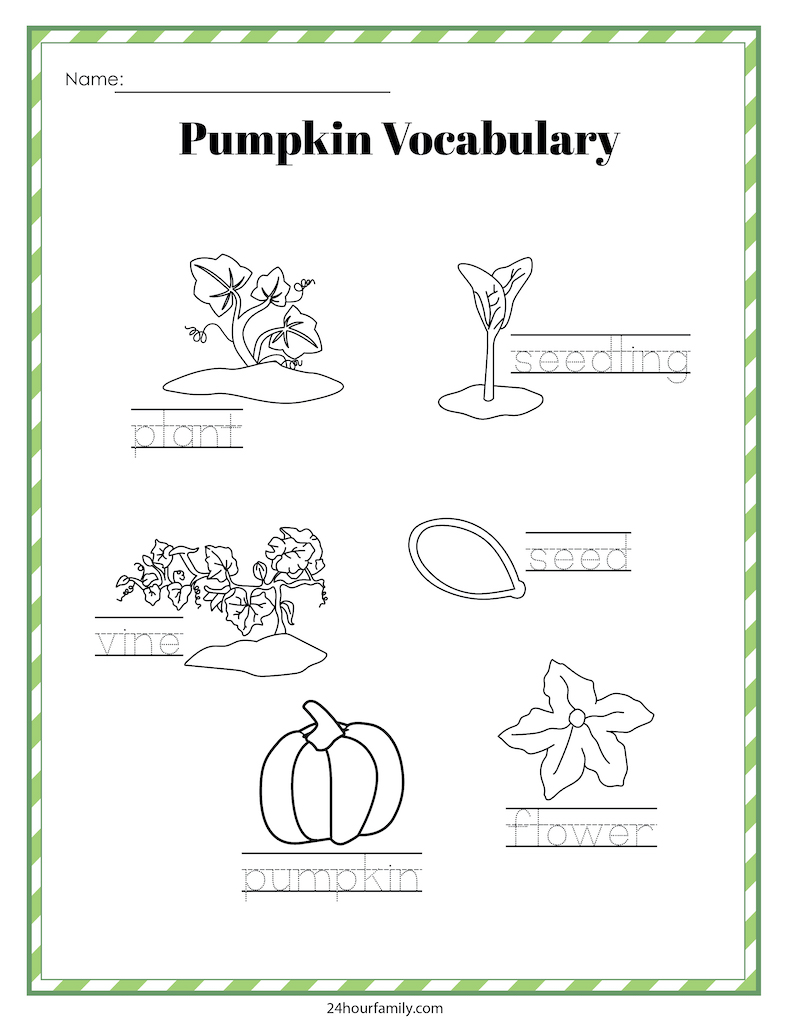
Pumpkins are a type of squash, and they belong to the Cucurbitaceae family. This family also includes cucumbers, watermelons, and cantaloupes. Pumpkins are native to North America, and they have been grown here for over 5000 years! Pumpkins were first cultivated by the Native Americans, who used them in many different ways.
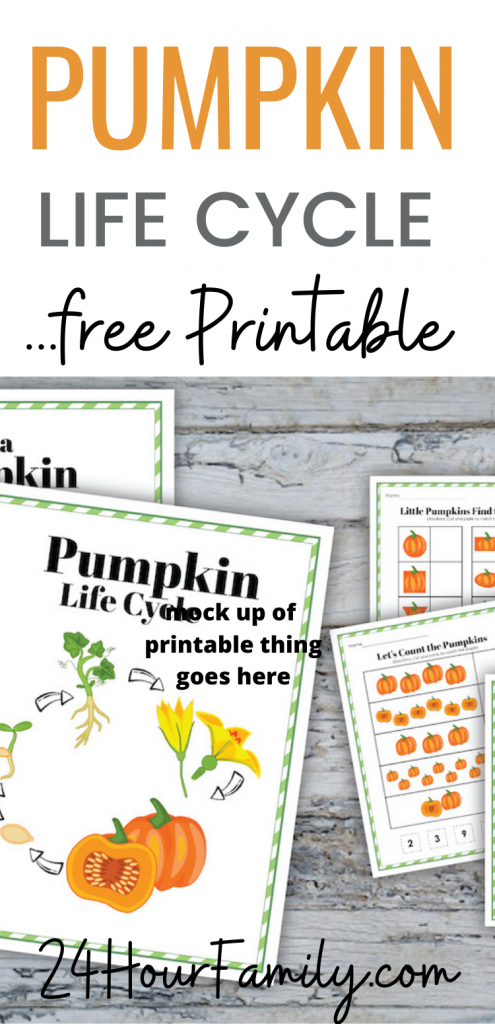

Now that you know the journey a pumpkin takes from seed to Thanksgiving, you can appreciate it even more this holiday season. So go out and enjoy all the pumpkin-flavored things you can find! And don’t forget to give thanks to the farmers who worked hard to bring these pumpkins to your table. Happy Thanksgiving!

